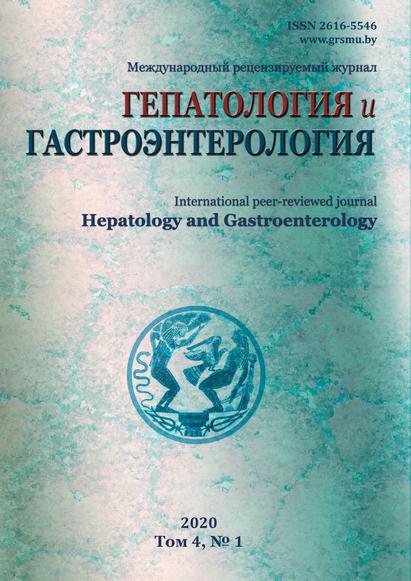THE STUDY OF THE ANTAGONISTIC EFFECT OF PROBIOTICS IN DYSBIOTIC DISORDERS IN RAT INFECTIOUS COLITIS MODEL

Abstract
Background. Clostridium difficile (C. difficile) is the most common etiological factor for antibiotic-associated diarrhea. The development of this type of infection can lead to serious complications such as pseudomembranous colitis. This condition is difficult to treat and can lead to the persistent disability of working-age patients. Probio re and Probio re plus are modern high-dose probiotics. Objective – to determine the effect of the use of Probio re and Probio re plus for the treatment of dysbiotic disorders that occurred in the modelling of infectious colitis in rats. Material and methods. Clinically healthy white outbred rats weighing 200.0-250.0 grams were taken for the experiment. To create experimental dysbiosis, animals were immunosuppressed by intramuscular injection of cyclophosphamide: the daily dose was 0.6 mg/kg for 7 days. Thereafter, exogenous microbial loading was performed by introducing into the stomach 1 ml of a suspension of St. aureus, C. albicans and Cl. perfringens for 3 days. The animals were treated for 5 days starting from the 11th day of the experiment. Rats were divided into the groups of 6 animals: group 1 - Probio re; group 2 - Probio re plus; group 3 - placebo (water); group 4 - intact animals. Results. The antagonistic effects of Probio re and, to a greater extent, Probio re plus against pathogenic microorganisms were detected. These probiotics restored the indices of normal intestinal microflora and suppressed pathogenic and conditionally pathogenic microflora. Conclusios. Probio re and Probio re plus can be used for the treatment of the dysbiotic disorders associated with infectious colitis.References
1.Arjaev NL, Gudz VA, Kozhevin RV. Profilaktika antibiotik- associirovannoj diarei, vyzvannoj toksigennym shtammom Clostridium difficile u detej (obzor). Ditjachij lіkar. 2017;4(55):28-34. (Russian).
2. Zyrjanov SK, Galeeva ZhA, Belousov JuB. Probiotiki i prebiotiki pri antibiotik-associirovannoj diaree: chto dokazano? Lekarstvennyj vestnik. 2016;2(62):16-19. (Russian).
3. Wanke M, Szajewska H. Probiotics for preventing healthcare-associated diarrhea in children: A metaanalysis of randomized controlled trials. Pediatria Polska.2014;89(1):8-16. https://doi.org/10.1016/j.pepo.2013.12.003.
4. Putnіkov AV, Golota JuV, Sergіjchuk TM. Kіlkіsnі ta funkcіonalnі pokazniki kishkovoї normobіoti shhurіv. Mіkrobіologіja ta bіotehnologіja. 2015;2:89-100. (Ukrainian).
5. Verhovodova JuV, Kіreyev ІV, Koshovij OM, Miga MM, Potapov SM, Osolodchenko TP. Sposіb modeljuvannja kolіtu z disbіotichnimi porushennjami. UK patent 201907465. 2019 April 04. (Ukrainian).
6. Vandepitte J, Engbaek K, Rohner P, Piot P, Heuck C, Claus C. Basic laboratory procedures in clinical bacteriology. Geneva; 1994. р. 30-32.
7. Brenner DJ, Krieg NR, Staley JT, editors. The proteobacteria. Part C, The alpha-, beta-, delta-, andepsilonproteobacteria. 2nd ed. New York: Springer; c2005. 1388 p. (Garrity GM, editor. Bergey’s manual of systematic bacteriology; vol. 2, pt. C).

















1.png)






